

|
Information and discussion regarding garden diseases, insects and other unwelcome critters.
|
 |
|
|
Thread Tools | Display Modes |
|
|
#1 |
|
Tomatovillian™
Join Date: Sep 2014
Location: CT
Posts: 290
|
So my Isis Candy Cherry is producing nicely with around a dozen trusses or so already set.
With that being said, I'm noticing some chlorosis with progressing necrotic lesions on older growth. Doesn't look like EB to me, as the necrosis isn't displaying any concentric rings. The growing conditions in the hoop house have been consistently above 70% RH and in the high 80's low 90's. I'm leaning more towards an N/fe deficiency as the plant is a little lanky, and I didn't fertilize as heavily this year due to the vetch crop. I gave them a tbs of tomatotone, ewc and azomite in the planting holes. With weekly fish/seaweed/humic acid drenches. It's my first year with the vetch so I don't have it dialed in just yet, and I didn't incorporate it into the soil; the majority of the residue I left above ground as I'm not so big on tilling these days. I realize that this will delay most of the added N benefits until next year. Any input is greatly appreciated.. Thanks! 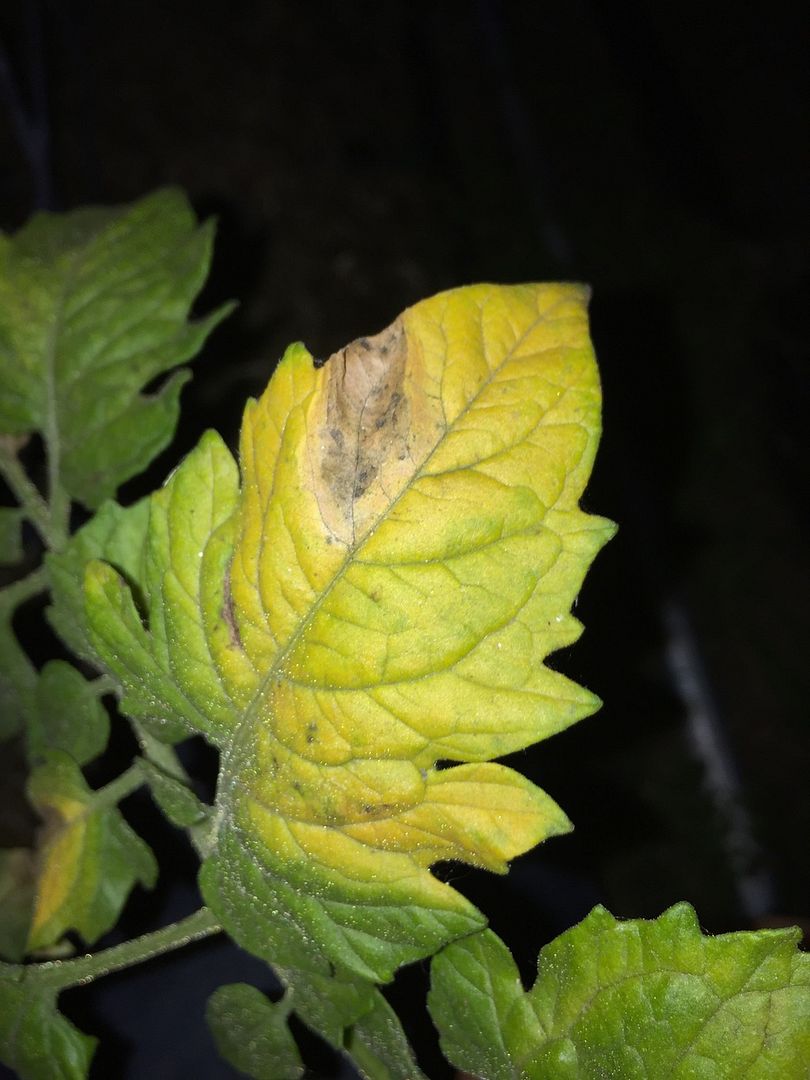 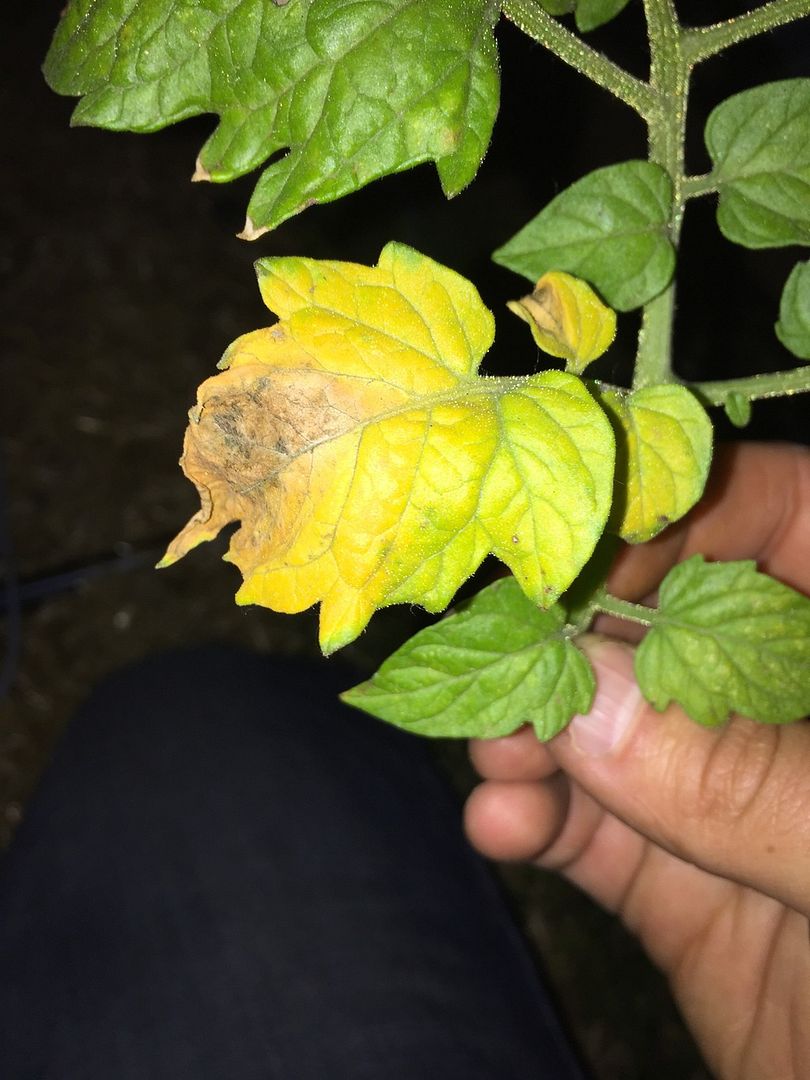 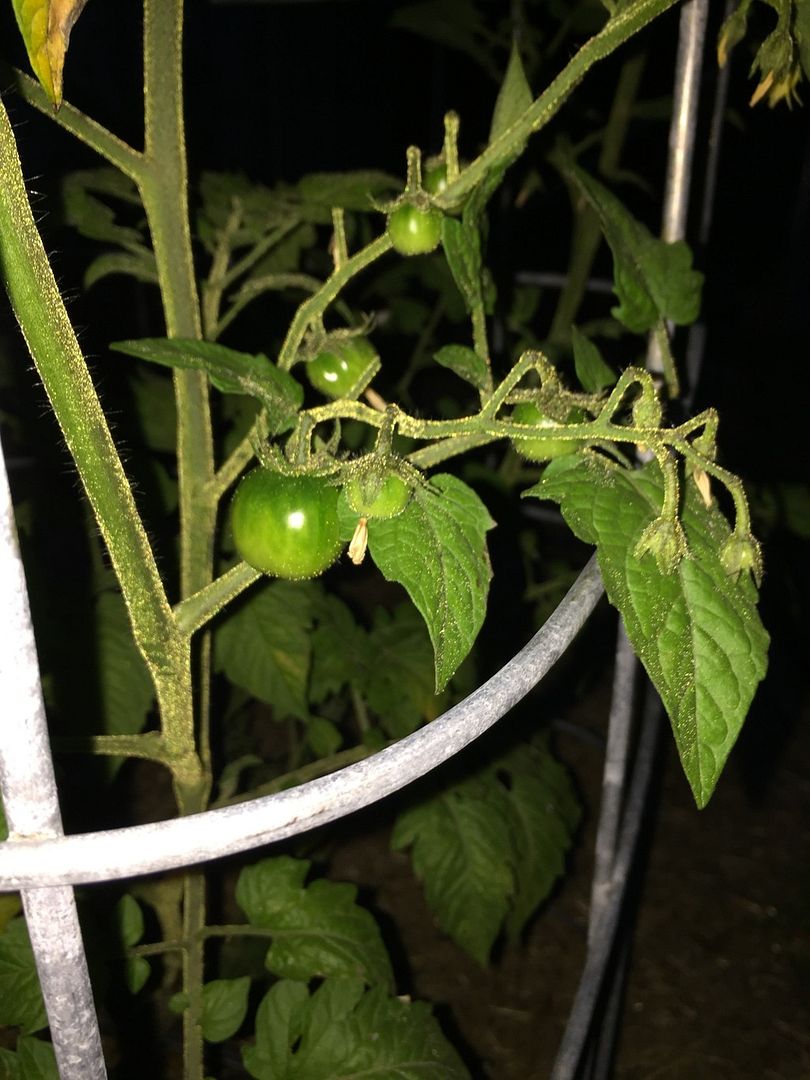 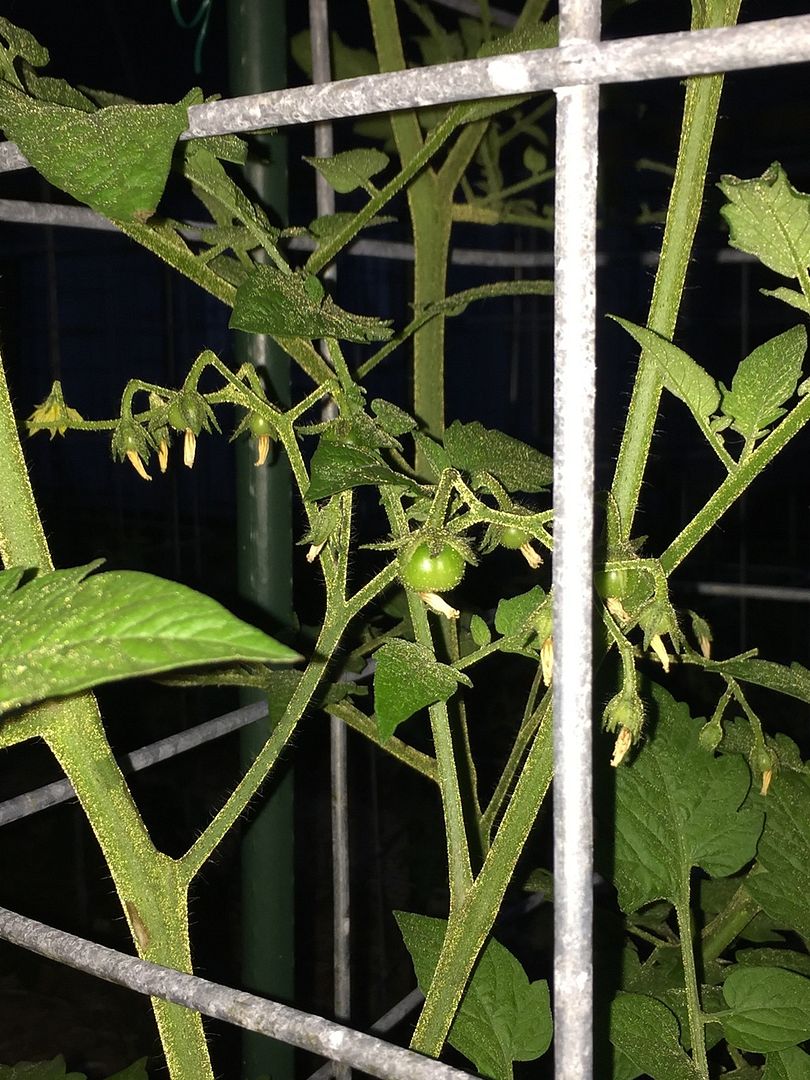 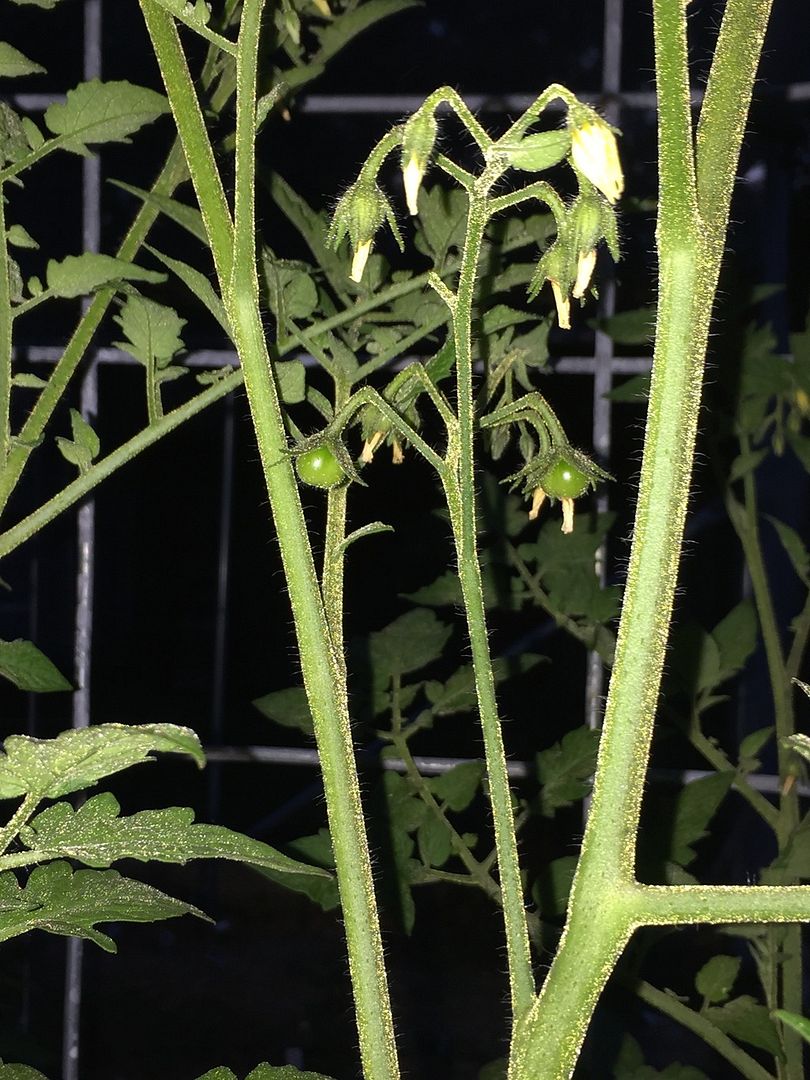
Last edited by Mike723; July 1, 2015 at 06:00 PM. |
|
|

|
|
|
#3 |
|
Tomatovillian™
Join Date: Jun 2015
Location: No.Central Arkansas - 6b/7a
Posts: 179
|
I'd call it Gray Mold (aka Botrytis blight) based on the leaves in the first 2 pics with the classic shaped blotches. But either way the treatment is the same - remove all the affected foliage and dispose of it away from the garden and begin a regular fungicide spraying program with the fungicide of your choice in the hopes of slowing it down.
Like Ray said, given the weather this year many of us are fighting severe fungus infections we don't normally have to deal with. http://vegetablemdonline.ppath.corne...f/Gray_Tom.htm
__________________
Dave |
|
|

|
|
|
#4 | |
|
Tomatovillian™
Join Date: Aug 2011
Location: Plantation, Florida zone 10
Posts: 9,283
|
Quote:
 That is exactly what I would say. That is exactly what I would say.
|
|
|
|

|
|
|
#5 |
|
Tomatovillian™
Join Date: Sep 2014
Location: CT
Posts: 290
|
Thanks!
Yea it's certainly a terrible year in terms of rain and humidity.. As usual with these issues, foliage is long gone, headed to a landfill somewhere lol.. I have a couple of suspects at this point.. The neighboring Isis candy is displaying the same symptoms (pic below).. Then I have one PL (didn't note the variety) that really resembles late blight (I pray that I'm wrong lol), but it didn't sporulate so we'll see..  The damage is working from the bottom up.. Thoughts? Thanks in advance The damage is working from the bottom up.. Thoughts? Thanks in advance  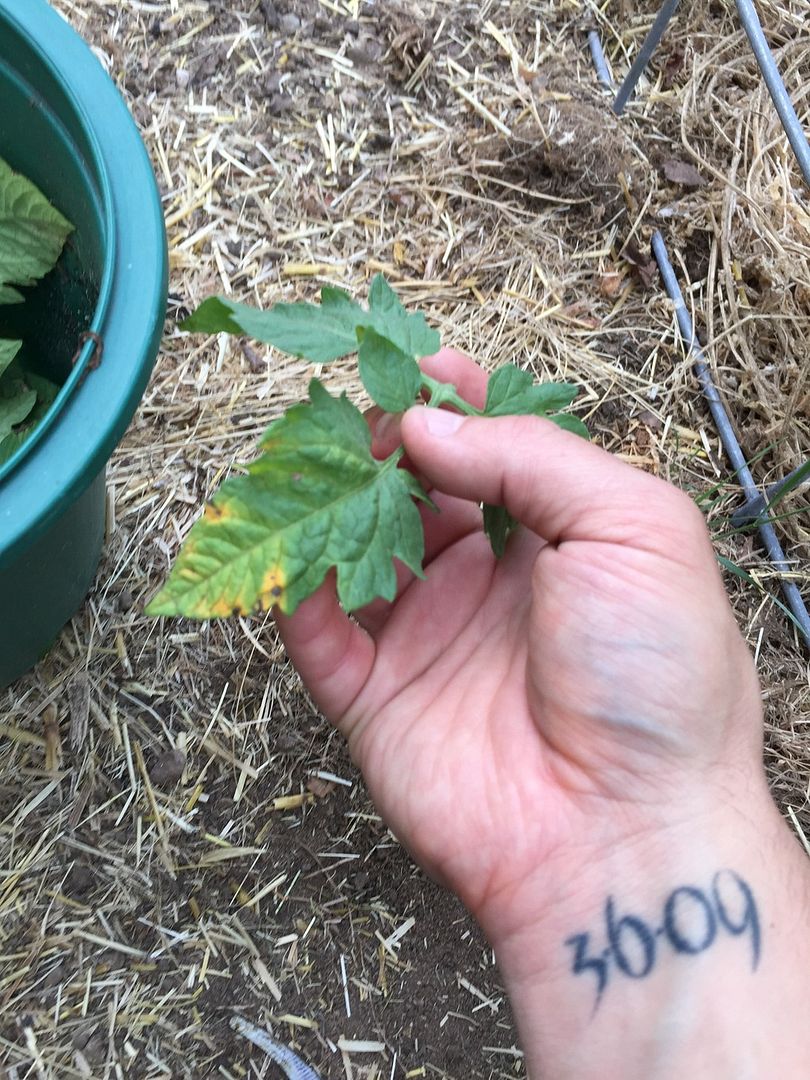 Neighboring Isis  Same Isis 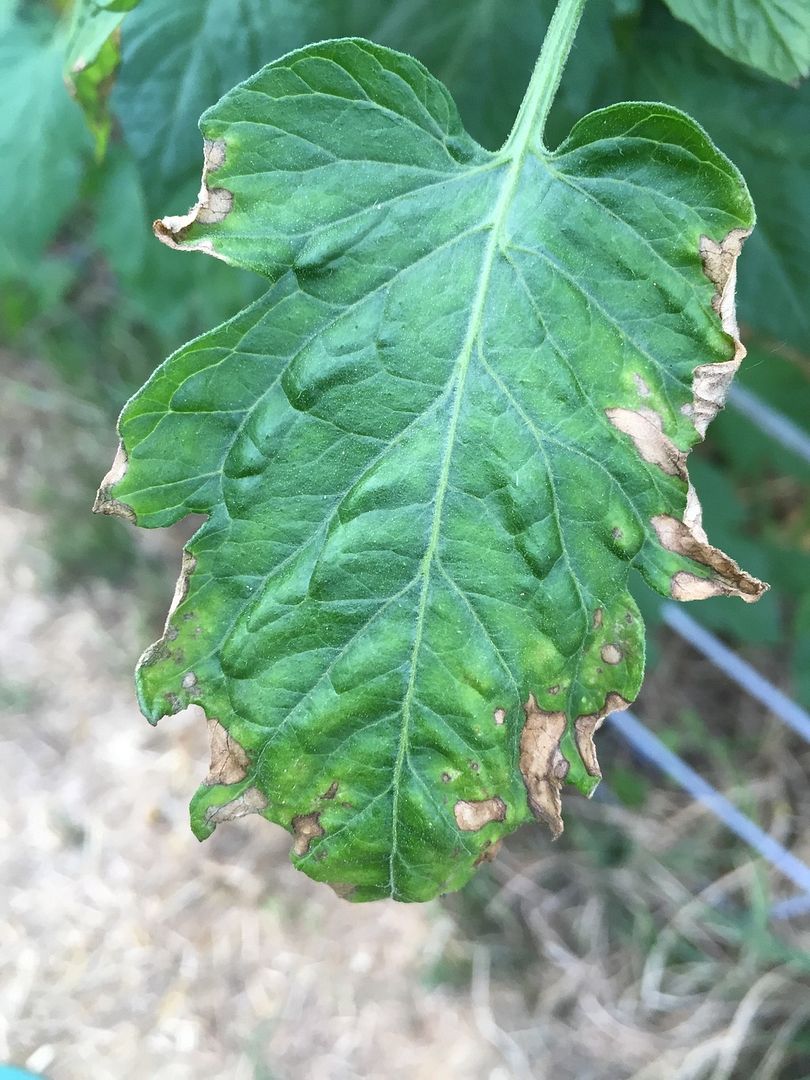 Didn't note the variety of this one 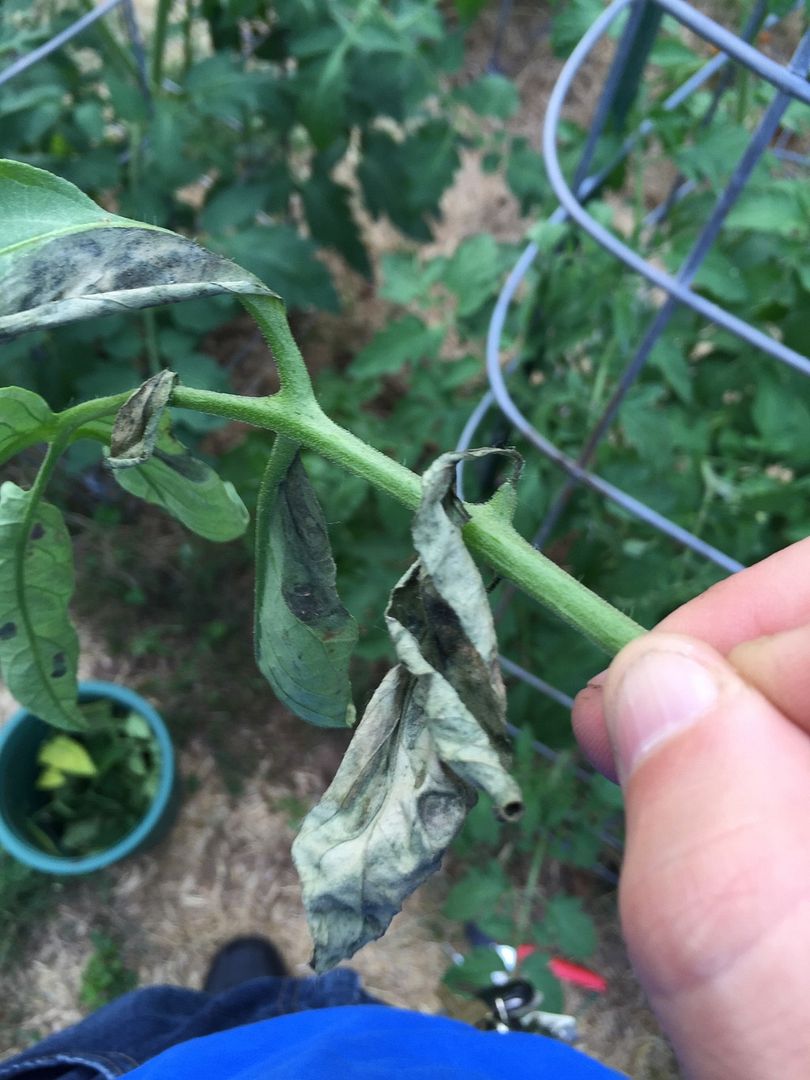 LB? 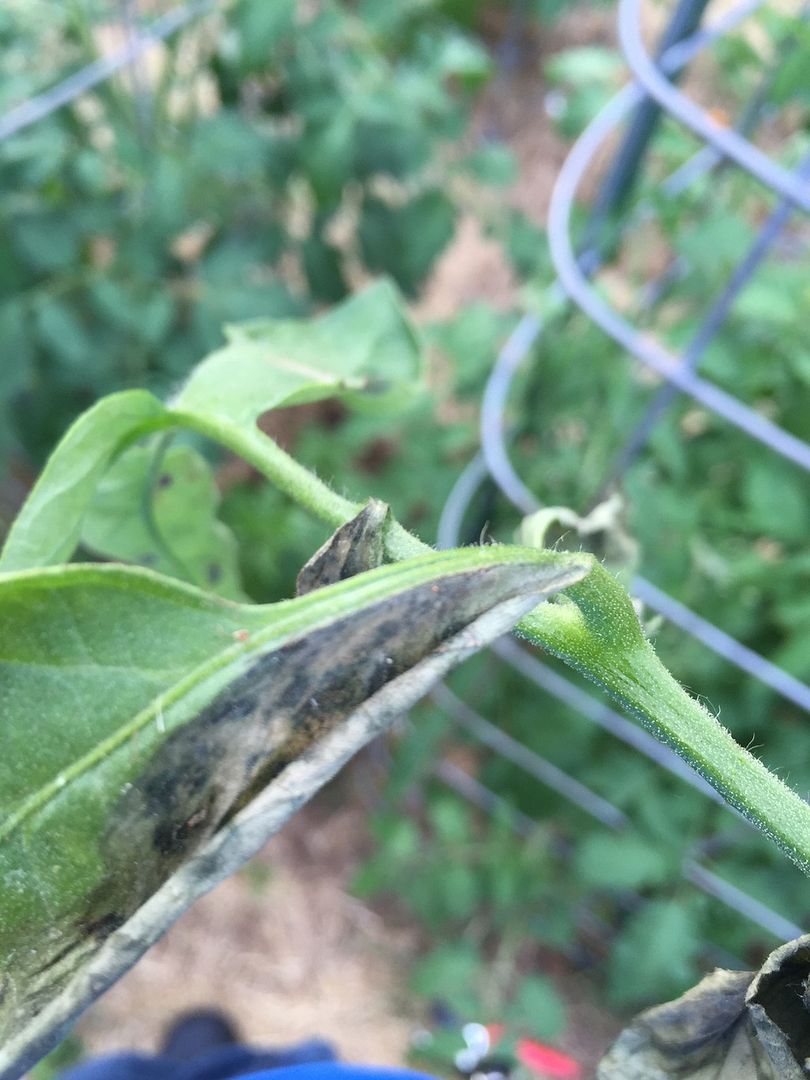 ... 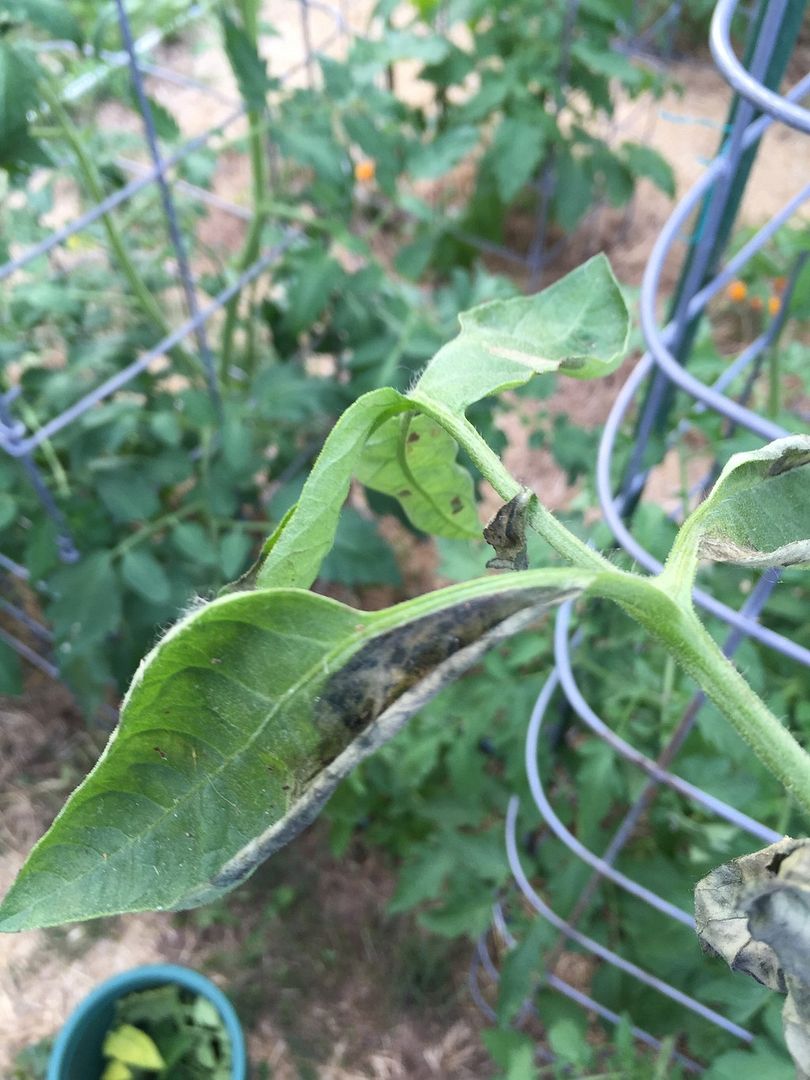
Last edited by Mike723; July 2, 2015 at 05:44 PM. |
|
|

|
|
|
#6 |
|
Tomatovillian™
Join Date: Sep 2014
Location: CT
Posts: 290
|
almost forgot.. on a better note, I received my Serenade today so I'm going to load up the ol' pump sprayer and get to work tonight.. One great plus with the hoophouse, NO rain = less spraying! haha
|
|
|

|
|
|
#7 |
|
Tomatovillian™
Join Date: Mar 2015
Location: Michigan
Posts: 18
|
I have a similar problem but my chlorosis covers entire branches throughout the plant(s). I have broken off all affected branches. The plants are producing tomatoes. Not all plants are affected (yet). Ideas? BTW We've had a lot of rain this year.
Last edited by Jeff S; July 2, 2015 at 11:38 PM. Reason: Additional info |
|
|

|
|
|
#8 |
|
Tomatovillian™
Join Date: Sep 2009
Location: Alabama
Posts: 7,068
|
[QUOTE=Mike723;486103]Thanks!
Yea it's certainly a terrible year in terms of rain and humidity.. As usual with these issues, foliage is long gone, headed to a landfill somewhere lol.. I have a couple of suspects at this point.. The neighboring Isis candy is displaying the same symptoms (pic below).. Then I have one PL (didn't note the variety) that really resembles late blight (I pray that I'm wrong lol), but it didn't sporulate so we'll see..  The damage is working from the bottom up.. Thoughts? Thanks in advance The damage is working from the bottom up.. Thoughts? Thanks in advance  If it is working from the bottom up then it is most likely Gray Mold and not Late Blight which usually appears first on the top half of the plant. Spray with the bleach solution mentioned in this section and then follow up with a copper spray. Serenade probably will be no help for this problem at least it never did any good when I tried it. I have plants affected by Gray Mold nearly every year and the only thing that really works well is the bleach spray followed by the copper spray the next day and then if it reappears repeat the process until it doesn't. If you wait too long the Gray Mold gets too advanced and there is no stopping it especially if the humidity is high or you are getting a lot of rain. Bill |
|
|

|
|
|
#9 |
|
Tomatovillian™
Join Date: Sep 2014
Location: CT
Posts: 290
|
Thanks a bunch bill! Ya know, I'm just a little apprehensive about dosing them with a bleach solution, lol scares me a little.. I figure all the run off will decimate any living thing it hits in the soil.. I assume it will also kill both beneficial and non in the phyllosphere as well.. Maybe I'll go with a diluted copper to start and take it from there. Then again, if I tarp the soil before the bleach I guess that's a option too. It'd be a great way to sanitize the leaves and then inoculate with BT.. Hmmm
Thanks again |
|
|

|
|
|
#10 |
|
Tomatovillian™
Join Date: Sep 2014
Location: CT
Posts: 290
|
Welcome to the forum Jeff! You'll learn a lot around here.. Not sure about your issue without environmental conditions/pics and all, but it would serve you better to start your own topic on the issue. This way you'll get the undivided attention you deserve, and you won't cause other posters to get annoyed lol =).. Hope to see more of ya!
|
|
|

|
|
|
#11 |
|
Tomatovillian™
Join Date: Jun 2015
Location: No.Central Arkansas - 6b/7a
Posts: 179
|
Mike - I assume these plants are growing outdoors rather than under cover (your avatar)?
Many of the different molds and even some fungus infections sometimes get lumped under the label "gray mold" even though they have different causes and symptoms and end results ie. Alternaria (the most common) vs. Botyrius vs. Sclerotinia. But fortunately for us the treatments for all of them are basically the same - good clean cultural practices, really good air circulation through the plants, stripped removal and bagging of all affected foliage, and preventative fungicides with a focus on sulfur. Like you I am not real comfortable with using bleach sprays - no critic of Bill's work intended - because of the potential side effects (primarily the addition of even more moisture) and the lack of controlled research. But two other alternatives to fungicides are available that often get overlooked - hydrogen peroxide in a 5-10% solution and lime dusting (which has the advantage of being drying at the same time). Just some thoughts to consider when making your decision. Dave
__________________
Dave |
|
|

|
|
|
#12 | |
|
Tomatovillian™
Join Date: Sep 2009
Location: Alabama
Posts: 7,068
|
Quote:
When I first started using this helpful tool in dealing with foliage diseases I did it out of desperation and figured I would be killing all my plants but the opposite happened and most of my doomed plants survived my experimenting. The ones that didn't were the ones where I was experimenting with the weaker concentrations. I spent a full season the next year experimenting with different bleach water ratio's and the affect they had on different diseases and plants and found ratios that worked for most foliage diseases to one extent or another. The problem that was most effectively corralled by the bleach treatment was Gray Mold and any other mold or mildew disease many of which had shown remarkable resistance to other treatments most of which are far more toxic. Remember that the bleach oxidizes fairly quickly on contact so there really isn't much left to worry about. I found that frequent use did not have any noticeable affect on the healthy plants so that is another plus and a really big plus is it is very cheap compared to most other products. The biggest plus is that it works. Bill |
|
|
|

|
|
|
#13 | |
|
Tomatovillian™
Join Date: Sep 2009
Location: Alabama
Posts: 7,068
|
Quote:
There are definitely dangers when using a product that is so reactive like bleach. Your sprayer must be free of other chemicals and you must wash it immediately after use. If your mixture is too concentrated it can definitely burn healthy leaves but if it is too weak it wont be effective. If you spray it in bright sunlight you can have leaf burn. I certainly would avoid breathing any mist from it as I would any chemical. There are some diseases that it is not as effective on as others but since I usually have several to deal with at any one time that isn't a real problem. Sometimes multiple sprays are needed and sometimes in the case of severe diseases in severe conditions the mixture needs to be so strong it will actually cause some leaf burn in order to help with that disease (I'm talking about Late Blight). As to a controlled experiment I don't think anyone has a vested interest if making bleach a better alternative to the expensive fungicides whether chemical or organic. I did consult with a couple of chemist when I started and during the experiment. The one of them that is a gardener himself now uses the bleach spray regularly for disease control in his garden. As to your concern about adding more moisture the effect of the bleach in our humid climate is to neutralize a lot of the fungus and stuff that will grow any way unless it is stopped. My plants are generally soaking wet every morning til at least 9 am so a little water isn't going to matter especially since it is very sterile for a change. One of the most effective times to use the bleach spray is between rains when other fungicides are washed off losing their preventive affect and leaving the plant wet and vulnerable. It is very impractical and expensive to use things like Daconil during stretches of frequent rain and it is very ineffective. Copper is a little better but a hard rain will wash if off too. Sulfur is not too good here because of the leaf burn when the temps are above 90 degrees. Bill |
|
|
|

|
|
|
#14 | ||
|
Tomatovillian™
Join Date: Sep 2014
Location: CT
Posts: 290
|
Quote:
No, the plants are in the hoophouse (avatar).. I'm not getting the full benefit of it as I don't have any environmental controls set up just yet - so I have to keep the roll up sides up and both doors open. . The plants affected are on the outer most row and they do get an occasional wetting in a driving rain.. Because I caught it so early I figured I'd take the mildest root first .. I sprayed them all today (those not exhibiting symptoms as well) with serenade, and removed any other leaves that looked slightly suspect. I'm going to keep a close eye on them for now, and if something comes up I'll mix up a batch of the copper concentrate. Thanks for your time and advice with everything! Quote:
If all else fails I'll try the bleach route but I'm still skeptical haha.. Reason being: last year I had mixed up a batch of organic "water only" soil for an indoor grow.. By harvest time the soil was absolutely teaming with life, but unfortunately spring tails, fungus gnats (larvae) and a plethora of others I didn't bother identifying. Before tossing the soil in the basement hatchway (for the remainder of the winter) I wanted to "kill" it.. So I used a bleach solution of a ratio that I honestly don't remember.. Speculatively it was probably in the ball park of 1:10-15, as that is my usual for such treatments. I gave the soil a good drench and to my surprise an earthworm came crawling out of the surface squirming in what looked like discomfort lol poor thing - probably an egg in the castings I added to the soil.. I rinsed him off and put him in some fresh soil but he died about 10 minutes later.. Now of course this was a soil drench, much more concentrated than a foliar feed, but it just makes me uneasy.. Thanks so much for your time and advice, perhaps if the situation arises in the future I'll take it for a whirl 
|
||
|
|

|
|
|
#15 |
|
Tomatovillian™
Join Date: Mar 2015
Location: Michigan
Posts: 18
|
How do I go about creating a new post? I have pics but can't seem to figure out how to post.
|
|
|

|
 |
|
|
